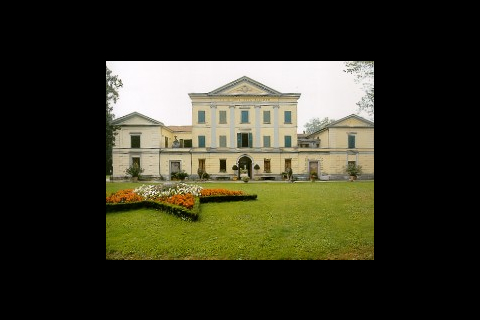-

VILLA TURRINI ROSSI NICCOLAJ

- This villa was constructed towards the end of the 1700s to serve three separate functions: a place where intellectuals could relax, a seat of government representation (it belonged to a member of the Bologna senate) and the managing offices of its agricultural activities. In the late 16th century, the plantation, known at the time as \"Serraglio\" (Fortress), belonged to the Turrini family who, after moving to Bologna, made a fortune in banking. The rise of the Turrinis culminated in 1722 when they inherited the estate of Count Ottavio Rossi, who belonged to one of the oldest noble families of Bologna. Later on, in 1761, Francesco Turrini Rossi was nominated senator and his family was considered to be members of the Bolognese aristocracy. On the night between May 6th and 7th, 1799, Ugo Foscolo, the poet and revolutionary, was the guest of the Turrini Rossi counts. Having been wounded while fighting alongside the French against the Austro-Russian coalition in the town of Cento, he sought refuge with his friends, the Counts of Calcara. The layout of the villa's interior is based on a central double loggia, both of which were painted by as yet unknown artists, depicting, among other sites, the Calcara landscape with the Samoggia River. The building is reached by a linden-tree lined driveway immersed in a verdant park which still houses the servants' quarters, the ice house and a very well preserved “romantic garden.”